Audiovector Trapeze Reimagined (Ri) speakers Review
Even 45 years after its debut, the design of the Audiovector Trapeze is still considered extravagant and acoustically advantageous. Trapeze Reimagined (Ri), the brand-new version is also packed with a wealth of refinements. Tested at 17,850 euros.
by Michael Lang
If you see fish icon in Trapeze, instead of seeing ‘Trap eze ‘, this is a bug in the version of Andada that is served by google fonts. Thanks for understanding.
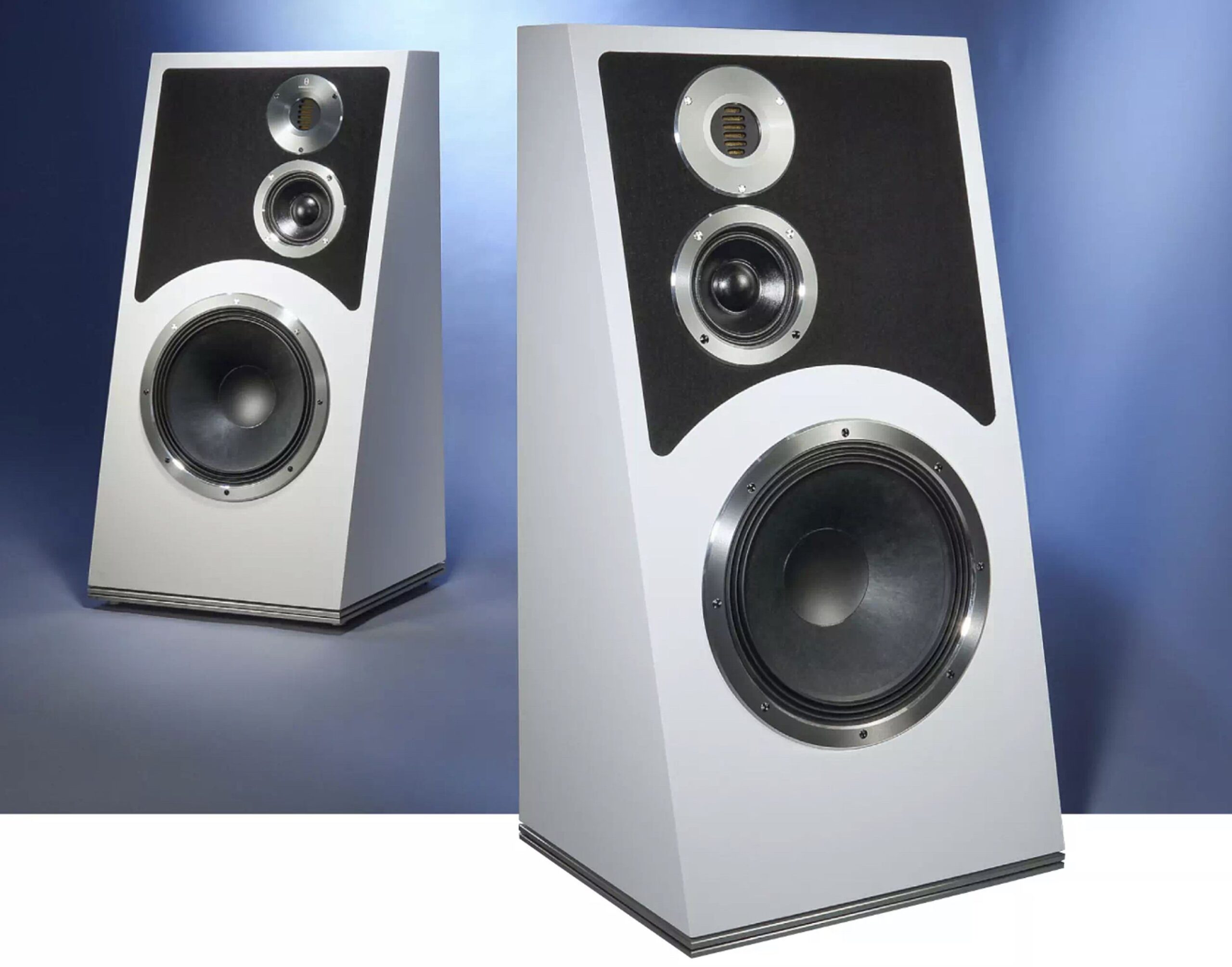
No question, in many ways, modern speakers sound more natural than their predecessors from 20, 30, or even 40 years ago. However, there are many music lovers who, despite appreciating the low-distortion precision and careful reproduction of even the smallest details in many of today’s models, miss something: the special kick, the little thrill factor that makes the heart jump with joy even at low volumes, and, in those moments when one can really let loose without being disturbed by housemates or neighbors, gives rise to pleasant shivers and joyful applause.
Precision and Playfulness
It was exactly this combination of precision and playfulness that Audiovector’s founder and head of development, Ole Klifoth, had in mind when he conceived the Trapeze Reimagined. He decided to look deep into the history of his company to realize this vision. While reviewing the archives, he rediscovered his first professionally made speaker, the Trapeze. He quickly set about verifying the soundness of its concept, and after coming to a positive conclusion, began considering a fundamental rejuvenation.
Compact Despite 30 cm Bass, Thanks to Isobaric Design The shape remained the same but is now built from significantly sturdier hardwood, with internal bracing to counteract resonances. Additionally, two aluminum plates, one with balls and one with height-adjustable spikes, ensure strong decoupling from the floor. The baffle around the tweeter and midrange driver has also been flocked with sound-absorbing felt. The Trapeze Ri is a relatively compact speaker with exclusive drivers, starting with a 30 cm woofer featuring a record-breaking 10 cm voice coil. Inside, another 20 cm bass driver, along with a bass reflex port, supports the bass driver.

The advantage of this version of the isobaric concept, where an internal driver radiates towards the rear bass reflex port, is that deep tones with high levels and low distortion can be achieved from a relatively compact enclosure. Additionally, a special, multiple-folded surround is used to minimize distortion, as with the midrange driver.
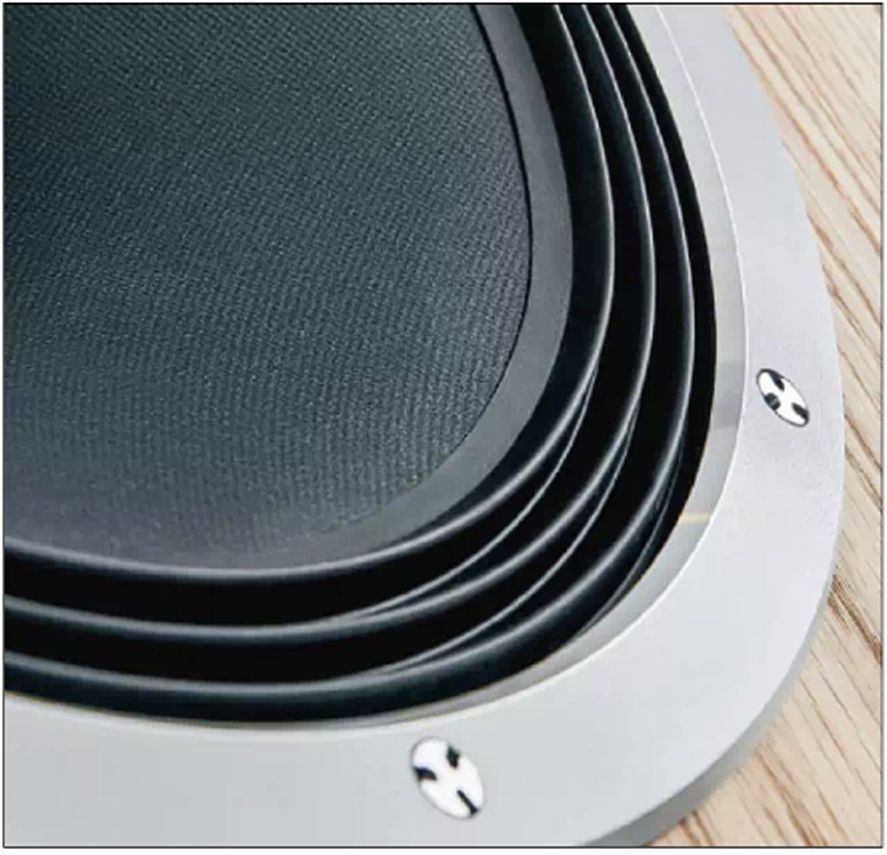
The midrange driver is also a specially made version for Audiovector. According to Ole Klifoth, it operates exactly in the range where the bass and the in-house AMT tweeter are smoothly and phase-error-free crossed over with a slope of 6 dB per octave. The crossover is built with extremely high-quality components and has been cryogenically treated. Additionally, a very strict selection of components with a tolerance of plus/minus 1% accuracy is carried out.
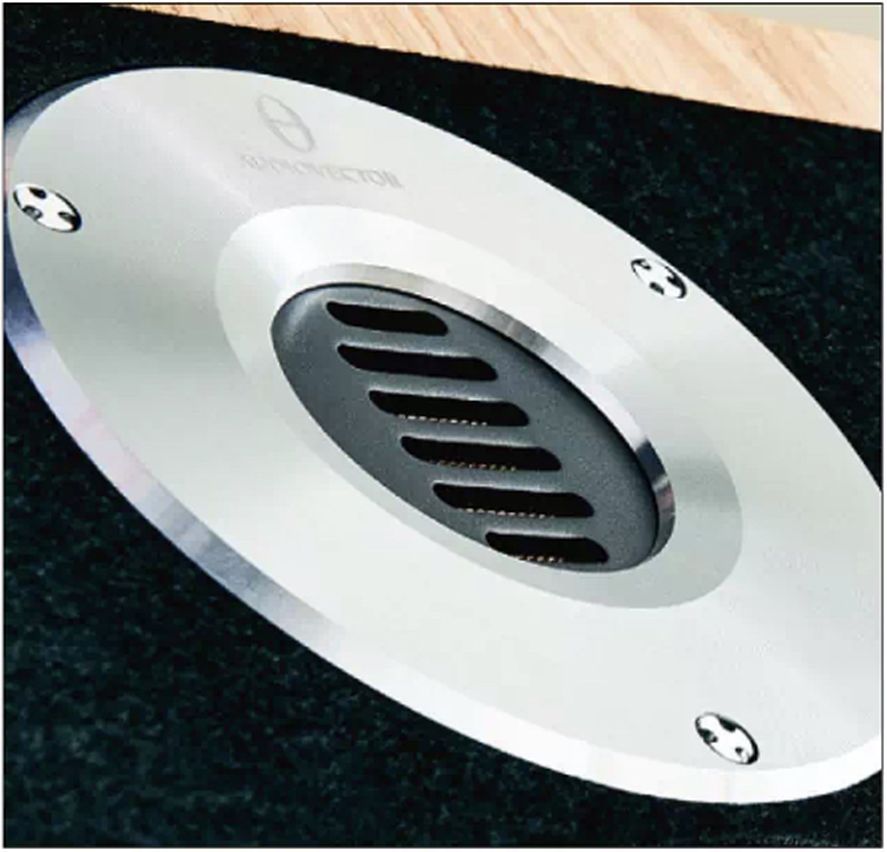
To harmoniously and seamlessly match the lightning-fast and uniformly wide-dispersing AMT tweeter both vertically and horizontally, Klifoth equipped the midrange driver with an especially light and stiff diaphragm, the special surround, and a powerful neodymium magnet. A copper cap is also placed on the magnetic drive system to reduce distortion.
However, Klifoth’s ingenuity did not stop there, as a quick glance at the rear of the speaker clearly shows: besides the bass reflex port near the floor, there is also a port behind the AMT tweeter that allows it to radiate largely as a dipole, i.e., radiating forwards and, minimally damped, out-of-phase backwards. This is intended to create a maximally open and spacious sound image, detached from the speakers, in the spirit of Dr. Oskar Heil, the inventor of the Air Motion Transformer – or AMT for short.
Looking at the massive terminal, one might think, seeing only three connectors, that they couldn’t decide between single-wiring and bi-wiring in Denmark. But far from it: the Trapeze is a pure single-wiring speaker.
The third connector is again the result of Ole Klifoth’s ingenuity and research spirit and is prosaically named “Freedom.” Klifoth explains that when drivers are in motion, they induce currents that lead to distortion. Contrary to popular belief, these movements, in his opinion, cause coloration and distortion in the sound. To remedy this, he integrated a separate crossover into the speaker, whose sole purpose is to process these negative effects and direct them to the grounding terminal of the wall socket via the supplied power cable.
Three Is Not Too Many
Also impressive and rare to find elsewhere is the three-stage switch located directly next to the “Freedom” socket, which allows for adjustment to the different damping factors of various amplifier types: Position 1 is recommended for transistor amplifiers with a medium damping factor, while Position 2 is ideal for transistorized models with high damping. Position 3 is reserved for tube amplifiers, which generally have only a minimal damping factor.
At first, we weren’t too impressed with this idea. But during a factory visit to Denmark in the spring, we were able to convince ourselves that this is by no means an attention-seeking gimmick but rather a technical move with remarkable sonic benefits. This became clear in the listening room when we had several amplifiers with different design philosophies lined up. In the first round, we used the NAD C 3050 with its Class-D amplifier technology, followed by the T+A R 2500 R, which has a firm grip on almost any speaker despite minimal feedback, and finally the Prima Luna tube integrated amplifier Evo 400.
It quickly became apparent during Prince’s “Cold Coffee & Cocaine” that the incredibly fast and dynamic piano strikes sounded somewhat sluggish and constrained, and the magic of the improvised piece was lost. The NAD turned out to be a good, but for this caliber of speaker, underpowered partner. However, by precisely adjusting the Trapeze’s damping switch to position 1 for amplifiers with moderate damping, a satisfactory sound could be coaxed out.
Only minimal changes were observed on all amplifiers when testing with the “Freedom” connection. But what the speaker is capable of could still be clearly heard with the powerful T+A R 2500 R. It managed to bring out the Trapeze’s potential right from the first notes of Leonard Cohen’s “You Want It Darker.” Here, the Trapeze – which, by the way, unlike other Audiovector model ranges, has no upgrade option – showed that it can precisely convey moods and build the voice on a solid foundation.
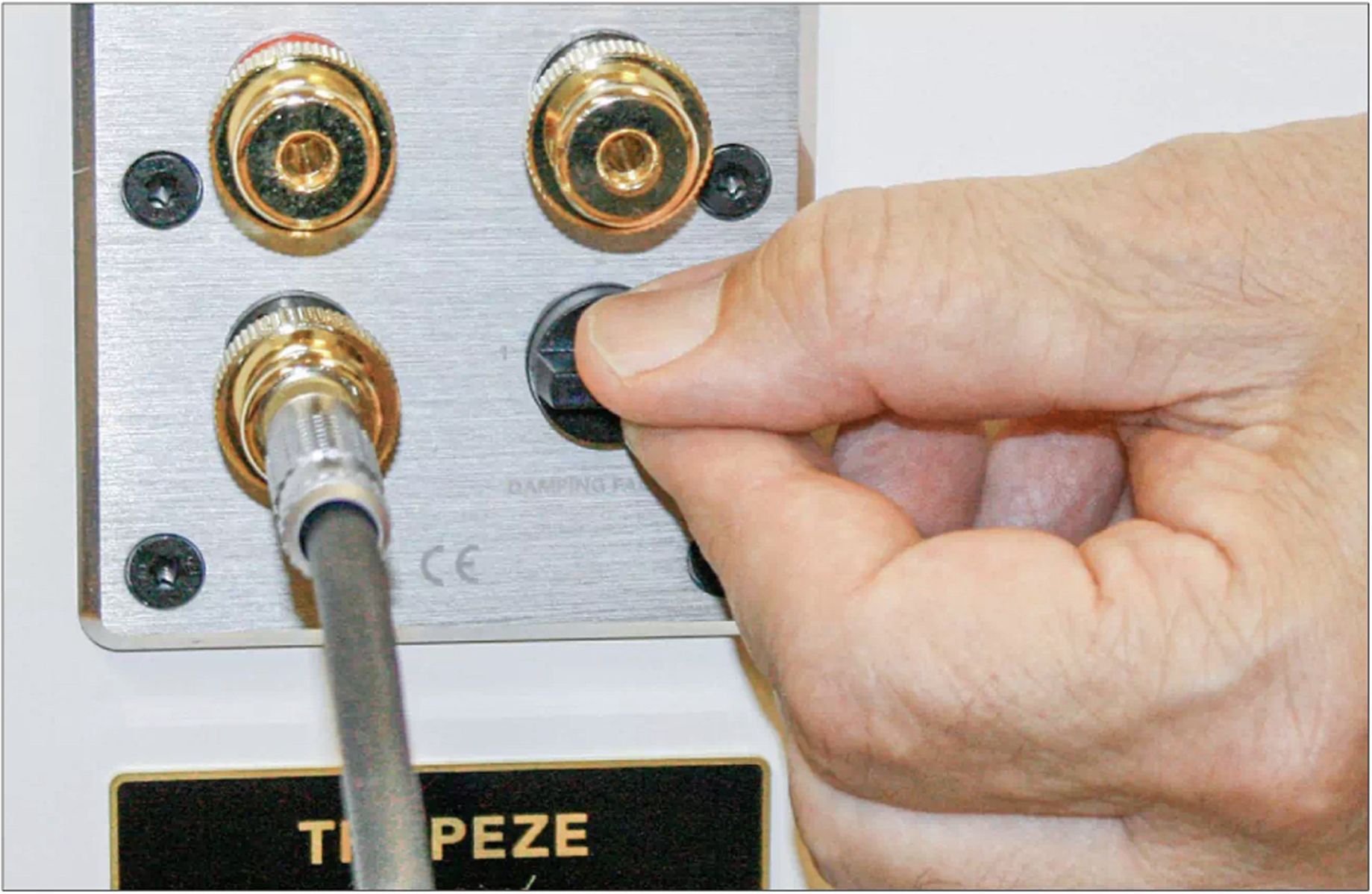
Lightning Fast and Homogeneous
The speed with which the extremely homogeneous and naturally colored Trapeze sprang into action was astonishing, complemented by excellent focus and a virtually unidentifiable point of sound origin. We were particularly impressed by Wynton Marsalis with Dianne Reeves on “Feeling Of Jazz” – an absolutely coherent and full-bodied performance, where the dimensions, tonality, bass pressure, and especially the captivating timing, provided joyful excitement. And not just in the sweet spot, but also to the left and right of it. So if you enjoy listening to music in company, the Trapeze offers another reason to be heard.
A magical atmosphere also arose when we listened with the lower-priced alternative, the Prima Luna tube amplifier Evo 400, which played brilliantly when we made the correct adjustment on the Trapeze. We only noted a slight loss of resolution and pressure, as well as control compared to the T+A. However, with mismatched damping, the magic hour was quickly over.
Lesson learned: Attention to detail is rewarded with better sound! Only then can well-conceived speakers realize their potential and show that they are worth the money – just like the Audiovector Trapeze Ri!
TEST EQUIPMENT
Streamer: Eversolo DMP-A8
Integrated Amplifiers: NAD C 3050, Prima Luna Evo 400, T+A R 2500 R, Rose RA280 Speakers: Gauder DARC 100 MK2 DV, T+A Criterion S 240
Cables: Silent Wire, Audioquest
Specifications
Product Type / Price Range
Floorstanding Speaker / 10,000-20,000 Euros
Website audiovector.com
Price in Euros 17,850
Dimensions (W x H x D) in cm 42 x 87.5 x 43.5
Weight in kg 25
Principle Dynamic, 3-Way, Isobaric
Terminal Single-Wire
Recommended Placement at least 50 cm distance from all sides, parallel positioning
SOUND 60%
very good 9.25/10
Sound Quality: A powerful and dynamically performing floorstanding speaker with fine, unobtrusive treble reproduction and three-dimensional sound staging.
MEASUREMENTS 15%
satisfactory 7/10
Frequency Response Somewhat uneven with a dip around 3,000 Hz, high-frequency drop due to measurement
Sensitivity (in Decibels) Low, requires powerful amplifiers (82.4)
Impulse Response Good
Minimum Impedance Unproblematic
Distortion in Percent at 63 / 3k/ 10k Hz
Slightly high (0.8 /0.04/0.1)
Compatibility Good
FEATURES & HANDLING 20%
good 8.25/10
Placement Very easy
Manual Quality Satisfactory
Initial Setup Somewhat complicated
Sound Adjustment Possible Yes
Cabinet Finishes White lacquer, walnut, oak; black ash; various lacquers on request

Scope of Delivery Grille, spikes, washers, grounding cable
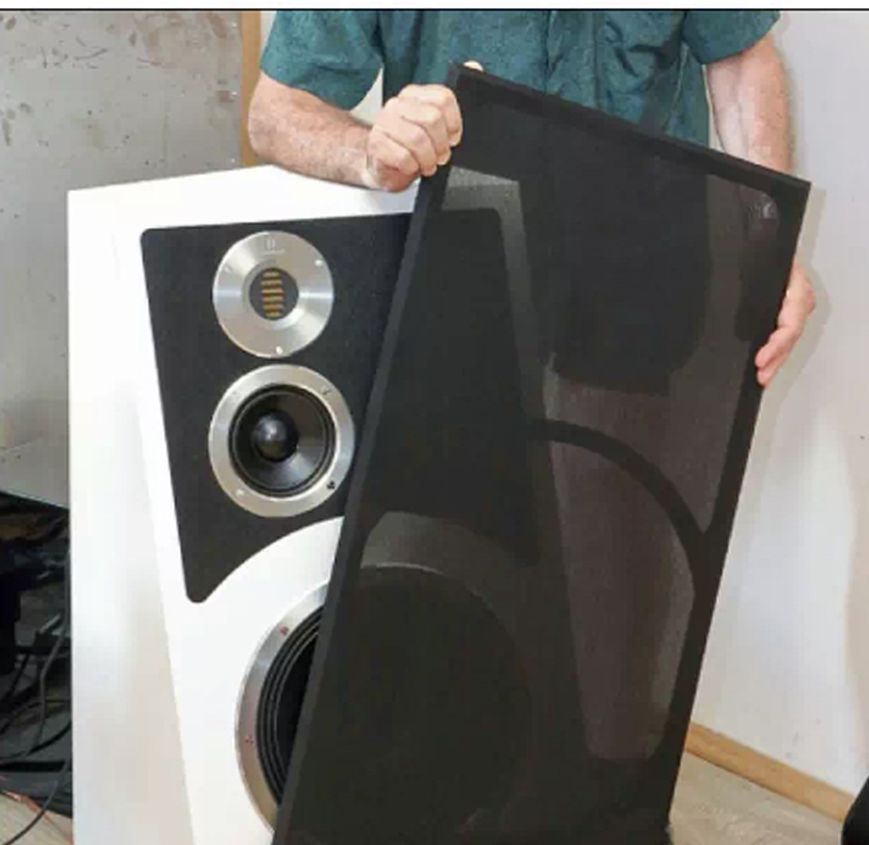
Haptics / Workmanship Very good
SERVICE & ENVIRONMENT 5%
sufficient 3/10
Warranty in Years 5
Packaging Flight case and plastic
Upgradeable No
TEST RESULT Good 8.25/10
Measurement
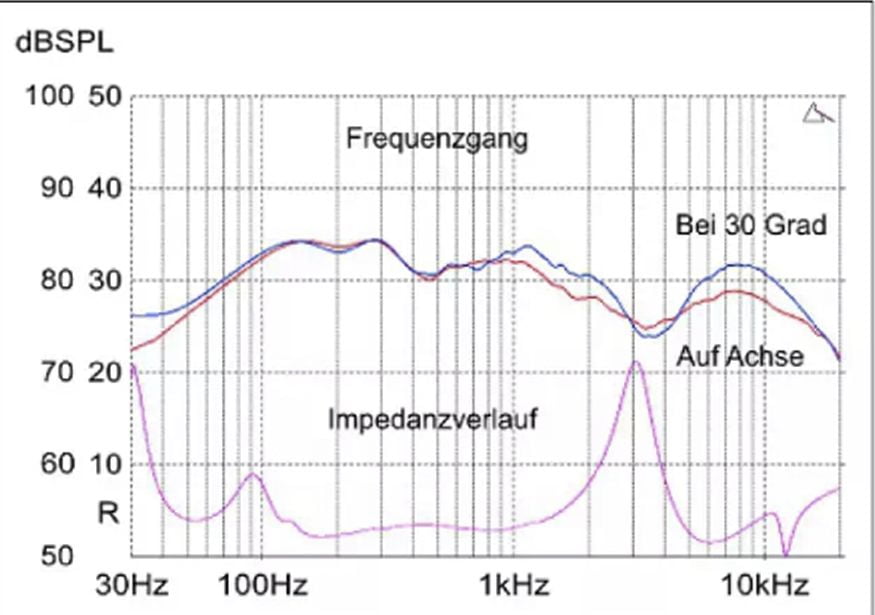
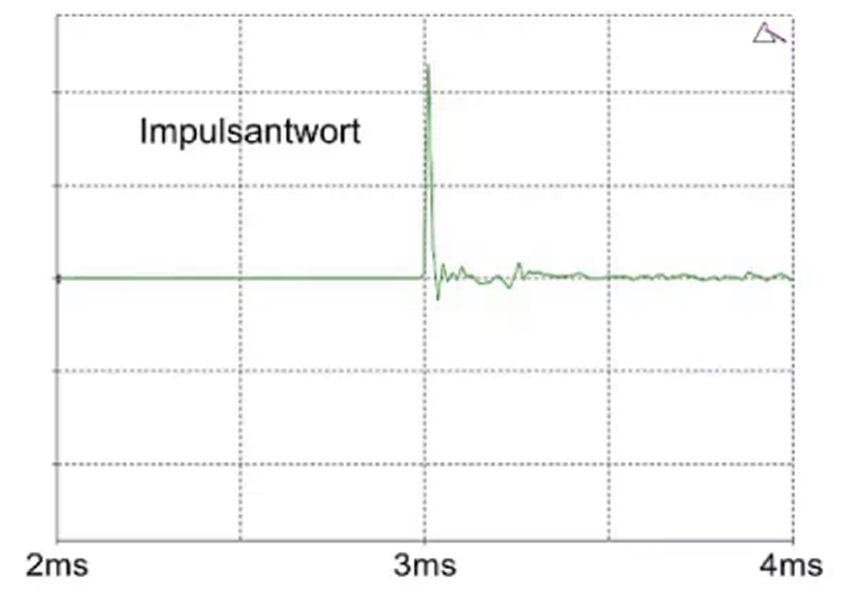
Verdict
Trapeze Reimagined – a homage to our very first loudspeaker
The new Trapeze Reimagined is based on the same principles as the original heritage model. Yet it has been brought bang up to ...







With such a large presence dip makes you wonder whether tweeter is out of phase